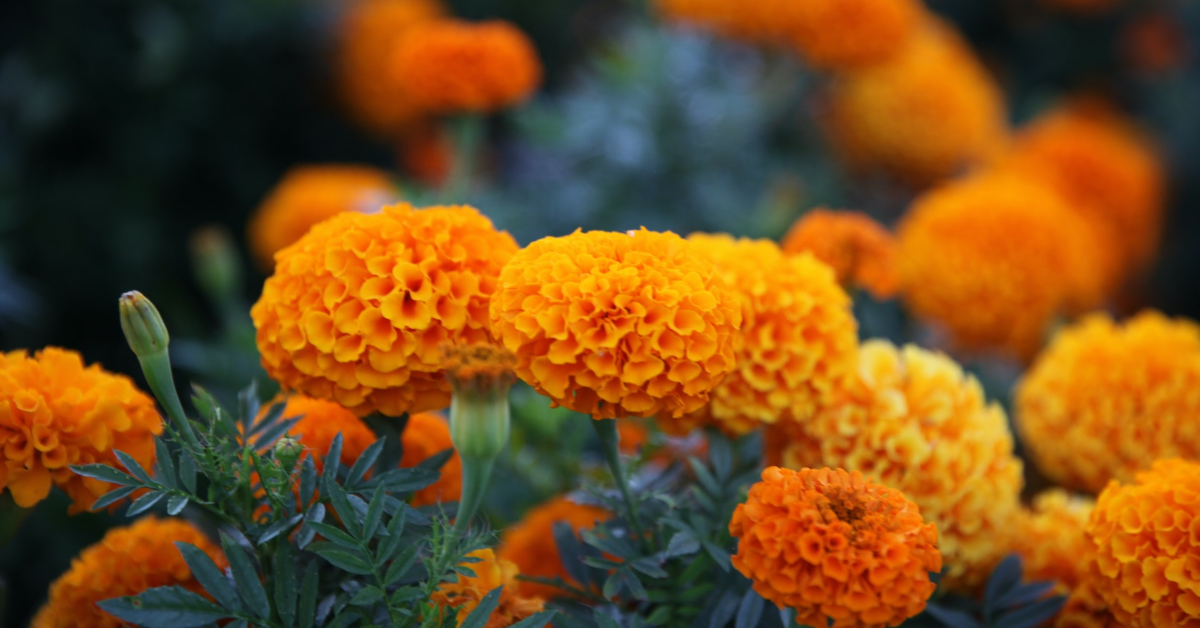The Bright and Beautiful World of Marigolds: 14 Fascinating Facts About These Cheerful Flowers

Marigolds are a bright and cheerful addition to any garden or landscape, and there is much to learn and appreciate about these fascinating flowers. From their origins in the Mediterranean and Asia to their use in traditional medicine and cultural ceremonies, marigolds have a rich history and significance that makes them truly unique.
Whether you are a seasoned gardener or simply have a curiosity about these beautiful plants, learning more about marigolds is sure to be a rewarding and enriching experience.
1. Classification and Distribution
Marigolds are flowering plants that belong to the genus Calendula. There are over 20 species of marigolds, which are native to the Mediterranean region and parts of Asia.
2. Gardening and Landscaping
Marigolds are popular garden plants and are known for their bright, sunny flowers, which can be yellow, orange, or red in color. They are often used as border plants or in containers.
3. Traditional Medicine
Marigolds have a long history of use in traditional medicine. The flowers and leaves of the marigold plant have been used to treat a variety of ailments, including skin irritations, wounds, and digestive issues.

4. Pest Repellent
Marigolds have a strong, pungent aroma that is believed to repel pests, such as mosquitoes and rabbits. They are often planted in gardens to help protect other plants from being damaged by these pests.
5. Growing Marigolds
Marigolds are easy to grow and thrive in well-drained soil in full sun. They can be propagated from seeds or cuttings and are drought-tolerant once established.
6. Health Benefits
Marigolds are rich in antioxidants, flavonoids, and other compounds that are believed to have health benefits. Some research suggests that consuming marigold extracts or taking marigold supplements may have anti-inflammatory, antiviral, and anticancer effects.
7. Cultural Significance
Marigolds are the national flower of Mexico and are often used in traditional Mexican cuisine and cultural celebrations, such as the Day of the Dead. Marigolds are also popular in Hindu and Buddhist ceremonies and are often used in garlands and decorations. They are also used in wedding ceremonies in many cultures.

8. Etymology
The name “marigold” is derived from the Old English word “ymbglidegold,” which means “a turnip that moves in the sun.” This refers to the way the marigold plant follows the sun as it moves across the sky.
9. History
Marigolds have been cultivated for centuries and have a long history of use in gardens and as medicinal plants. They are mentioned in ancient Egyptian and Greek texts and have been grown in Europe since the Middle Ages.
10. Culinary and Cosmetic Uses
Marigolds are often used in herbal teas, cosmetics, and food. The petals of the marigold flower can be used to add color and flavor to dishes, such as salads and rice.
11. Pollinators
Marigolds are attractive to a variety of pollinators, including bees, butterflies, and hummingbirds. They are a good choice for gardens that want to attract these beneficial insects.

12. Pest Resistance
Marigolds are resistant to many common garden pests, but they can be susceptible to fungal diseases, such as powdery mildew and rust. To prevent these diseases, it is important to water the plants at the base and avoid getting the leaves wet.
13. Variety
Marigolds come in a variety of sizes and shapes, with some species growing to be as tall as 4 feet (1.2 meters) and others staying much smaller. There are also varieties with single or double flowers, as well as those with frilly or more simplified petals.
14. Hybridization
Marigolds can be hybridized to create new varieties with different flower colors and shapes. Hybridization is the process of crossing two plants to create a new plant that has characteristics of both parent plants. This is often done in order to create plants with desired traits, such as larger flowers or more vibrant colors.
In conclusion, marigolds are a fascinating and versatile plant that is worth exploring in more detail. From their bright, sunny flowers and strong aroma to their potential health benefits and cultural significance, there is much to discover and appreciate about these lovely flowers.
Whether you are looking to add some color to your garden, learn about traditional medicine, or simply want to learn more about the natural world, marigolds are a great subject to study and enjoy.





